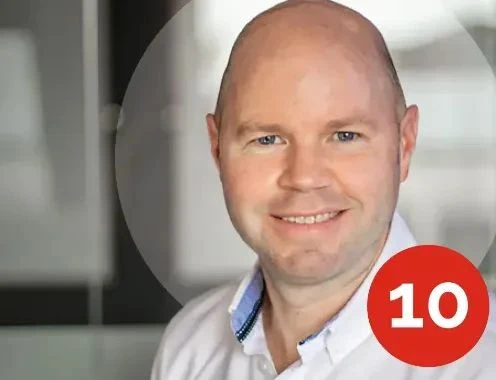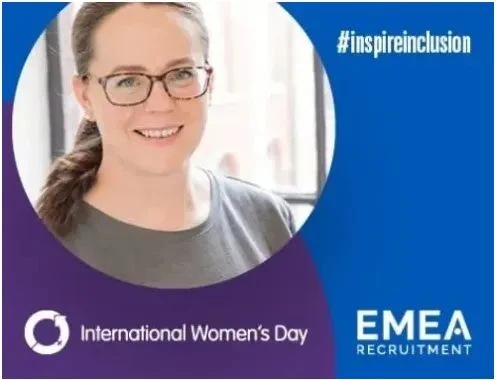Insights from 20 Years in Shared Service Center Recruitment

Matt Foster, Associate Director, has specialized in Shared Service Center recruitment for over 20 years, with experience across Central Eastern Europe.
He explains what excites him about the market, how he expects Shared Service Centers to evolve in the future, and the unique experience of living in Budapest.
What inspired you to specialize in Shared Service Center recruitment?
While living and working in Budapest, I set up a new Shared Service Center team to serve multi-lingual needs. Whether it was a Finance or IT role, the multi-lingual aspect was more important than technical skills. We had lots of inbound calls; it was client driven, like most good specialisms.
People becoming what I call career SSC employees was a new phenomenon. They were moving from one Shared Service Center to the other, moving up the hierarchy.
It also satisfied my need of providing not just people, but imaginative, creative recruitment solutions. Shared Service Center recruitment isn’t a transactional occurrence; it’s not uncommon to face the challenge of sourcing a high volume of multi-lingual talent into a small, sometimes remote, location.
For example, I worked in tandem with clients to solve the problem of getting 30 languages into a small village in northeastern Hungary. Beyond having a dedicated team and conducing continuous research, we liaised with local universities and their Language departments to spread the word. They promoted the opportunities by emailing students and advertising on their physical and virtual job boards.
We also utilized references and referrals, for instance, if a student spoke Dutch, we’d ask them who else in the class speaks Dutch…
How has the global Shared Services market evolved over the past 20 years?
Unrecognizably. The Shared Service Center model began as a way to save money; putting your shared services into one center was the number one driver to save money. Looking for a low-cost location was a secondary by-product; you’d decided to create a Shared Service Center, so you chose a cheap country.
There is now a focus on digitization and service levels with Shared Service Centers – specifically, how to reduce the gap in service quality that customers may perceive. There’s also been growth in the type of functions that you can outsource to an SSC. 20 years ago, strategic functions would not have been considered. Now, you have people with 20 years’ experience working in SSCs rising to high levels in the organization. I’m sure senior SSC managers will be on the boards of FTSE companies in the future.
I’ve seen the whole lifecycle – SSCs are now relocating back to expensive countries to satisfy the ever-increasing desire for quality over cost. There’s a perceived service level relative to the cost of operating in each country. Think of it as tiers of quality versus cost. For example, India tends to be at the lower end, Central and Eastern Europe (CEE) in the middle, and Western countries at the top. There’s a perceived value of customer satisfaction closer to the top, which is the result of a higher educated workforce, and better alignment with the languages spoken in non-SSC departments and divisions.
Timezones play a role, too. It’s the reason why Vodaphone has a Shared Service Center in Newbury and not New Delhi. Companies have to find that balance.
How do you expect the Shared Service Center market to evolve in the future?
With the move towards working from home, the traditional model has had to evolve over the last few years. Maybe we’ll see virtual SSCs, or they might move to town centers in the future.
My personal experience is in Central Eastern Europe, but India and Central America are large markets. What they all have in common is that governments have actively pursued tax incentives for multi-national organizations to set up offices there.
We could see even less developed countries pitching themselves as players in the SSC market. With so many digital nomads disrupting the traditional way of working, maybe island nations, such as in the Pacific Islands, could be on the rise.
I’m also looking forward to how SSCs will adopt AI in beneficial way.
Why did you move to Budapest specifically?
I decided my career was going to involve international business a long time ago.
I was the Country Manager of an online job board in Prague. The CEO asked if I wanted to do the same in Hungary – I didn’t even know where it was!
My degree was in International Business & French, so I was excited to use my languages and learn Hungarian. Hungary joined the EU while I was there, but it still felt like the wild east.
It was great to network with other expats, and had an emerging economy and market. We could introduce proven western techniques very quickly and work across the rest of Eastern Europe from there.
After a year, I was given ten more countries to look after. Recruiting in Central Eastern Europe gave me a lot more than a very stale UK market and economy.
What did you enjoy about living in Budapest?
I networked with like-minded people and met CEOs of FTSE 100 organizations, as well as being invited to Queen Elizabeth II’s birthday party.
I learned a lot and challenged myself. I was exposed to different cultures and languages, so I made loads of cultural mistakes; I declined vodka at breakfast with a CEO in Tallinn and the meeting ended suddenly…
I made mini mistakes daily, but these resulted in real cultural improvements in my professional working abilities.
What are you excited about in the world of SSC recruitment?
Everything. Mostly our position; we get seats at the top table in organizations looking at new countries to set up in.
We make a big difference to people’s lives. People I placed 20 years ago are now in senior positions in Shared Service Centers, so it’s incredibly satisfying. The depth of our connections across this sector is of huge value to our clients and candidates.
If you’re setting up a new Shared Service Center or are expanding your SSC team, Matt can support you with strategic talent acquisition processes and an active database around the world.
Get in touch with him today: [email protected]












You can also use your social account to sign in. First you need to:
Accept Terms & Conditions And Privacy Policy